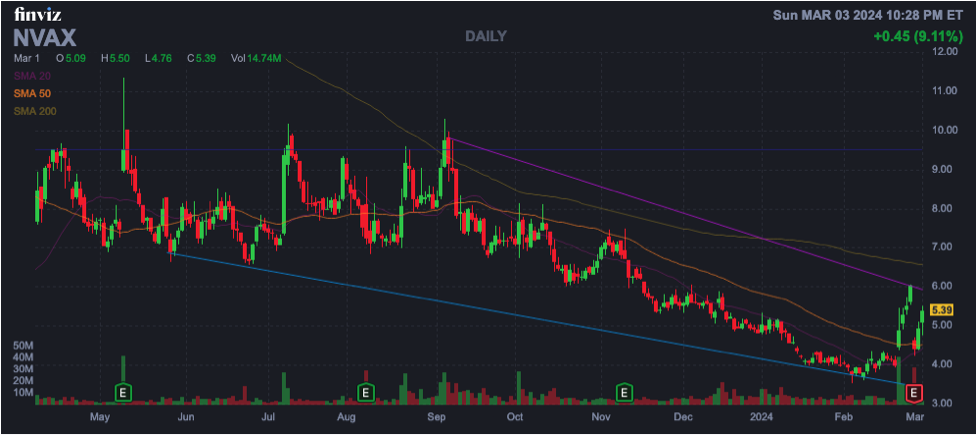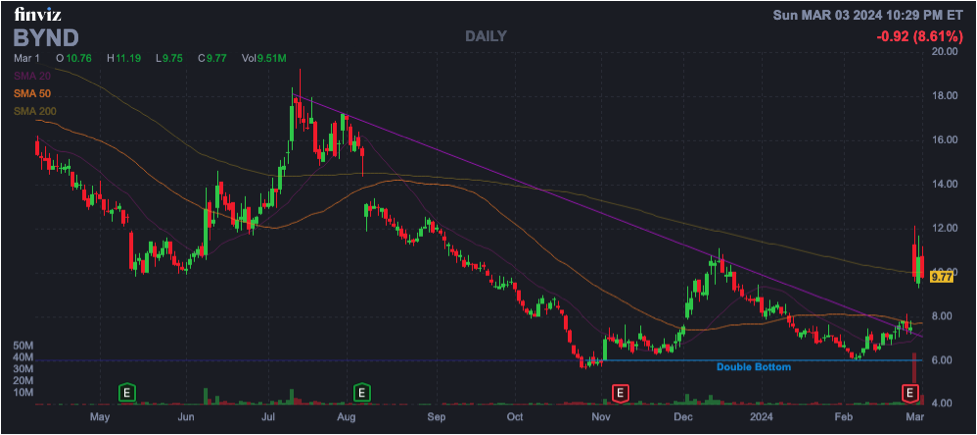Ever found yourself shorting a stock only to see a sudden spike, prompting an urgent need to cover your position as soon as possible?
What happened was called a Short Squeeze. Even the most seasoned traders have experienced this phenomenon. But do they really know what happened?
A short squeeze happens when a heavily shorted stock has a shape increase in buying volume causing short sellers to close out their positions, which drives the prices higher from the covers. As you have read in a previous article about NYSE Squeezes, NASDAQ is home to many short squeezes as well.
The most famously known NASDAQ short squeeze is GameStop (GME) in 2021. GameStock is a brick and mortar gaming merchandise retailer that had declining sales, which caused investors to heavily short the stock. GameStop had more shares sold short than the total number of shares available for trading (a situation known as a “short interest”).
A group of retail investors on the Reddit forum r/WallStreetBets noticed that GameStop was heavily shorted and began buying the stock which started driving up the stock price. As the aggressive buying started to surge, this put pressure on the short sellers to cover their positions (buying back at higher prices to limit the losses).
The unprecedented surge in GameStop’s stock price caused extreme volatility and attracted widespread media attention. The GameStop short squeeze had significant repercussions in the financial markets, leading to losses for some hedge funds that had heavily shorted the stock and prompting scrutiny from regulators and lawmakers. It also sparked a broader interest in retail trading and the democratization of investing.
Some traders utilize this situation by looking for stocks to buy that may have a potential short squeeze. Here is what a short squeeze trader should take into consideration:
Short Percentage of Float refers to the proportion of shares held short divided by the total float, where the float represents freely tradable shares. A short percentage exceeding 10% to 20% is typically regarded as high and may indicate potential short squeeze opportunities.
The Short Ratio, also known as Days to Cover or Short Interest Ratio, is a crucial metric in identifying potential short squeeze opportunities. It represents the number of days it would take for short sellers to buy back their positions based on the average daily trading volume of shares. This ratio is significant because it indicates the level of difficulty short sellers face when attempting to cover their positions without significantly impacting the stock price. However, for short sellers, a higher number of days to cover implies a greater and more prolonged squeeze, increasing their potential losses.
Short Percentage Increase refers to the percentage growth in the number of short sellers compared to the preceding month.
The following are some heavily shorted NASDAQ stocks that may be worth considering for a short squeeze.
| Company | Company Symbol | Short Interest | Short % Change | Short Interest Ratio |
| Novavax Inc | NVAX | 41.58% | 5% | 6.4 |
| Beyond Meat Inc | BYND | 37.86% | 1% | 7.8 |
| Immunitybio Inc | IBRX | 36.07% | 7% | 11.4 |
| Upstart Holdings Inc | UPST | 35.63% | -11% | 2.6 |
| Luminar Technologies Inc | LAZR | 35.28% | 13% | 11.6 |
| Prime Medicine Inc | PRME | 34.06% | -7% | 3.9 |
| Blink Charging Co | BLNK | 32.27% | -1% | 2.3 |
The first stock on the list, Novavax Inc (NVAX) has over 41% of its float shorted, an increase of 5% over last month. The short interest ratio is 6.4, which means that it would take the short sellers over six days to cover their position, based on recent average volume. Take a look at the chart below, you can see increased volume in the past few days…

The second stock on the list, Beyond Meat Inc. (BYND) has over 37% of its float shorted, an increase of 1% over last month. The short interest ratio is 7.8, which means that it would take the short sellers over seven days to cover their position, based on recent average volume. As you can see here, it looks like BYND may have been squeezed.

The last stock on the list, Blink Charging Co. (BLNK) has over 32% of its float shorted, an decrease of 1% over last month. The short interest ratio is 2.3, which means that it would take the short sellers over two days to cover their positions, based on recent average volume.
Although a stock may exhibit favorable ratios and attract significant short interest, it’s crucial to recognize that these factors alone do not guarantee an upward movement in its price, particularly in a bear market. Additionally, high levels of short interest in a stock could signal underlying issues or concerns that have prompted investors to bet against its performance.
Don’t forget to subscribe to our newsletter in order to become aware of the latest investment opportunities.
Disclosure: Author had no positions in any of the above at the time the article was written.





